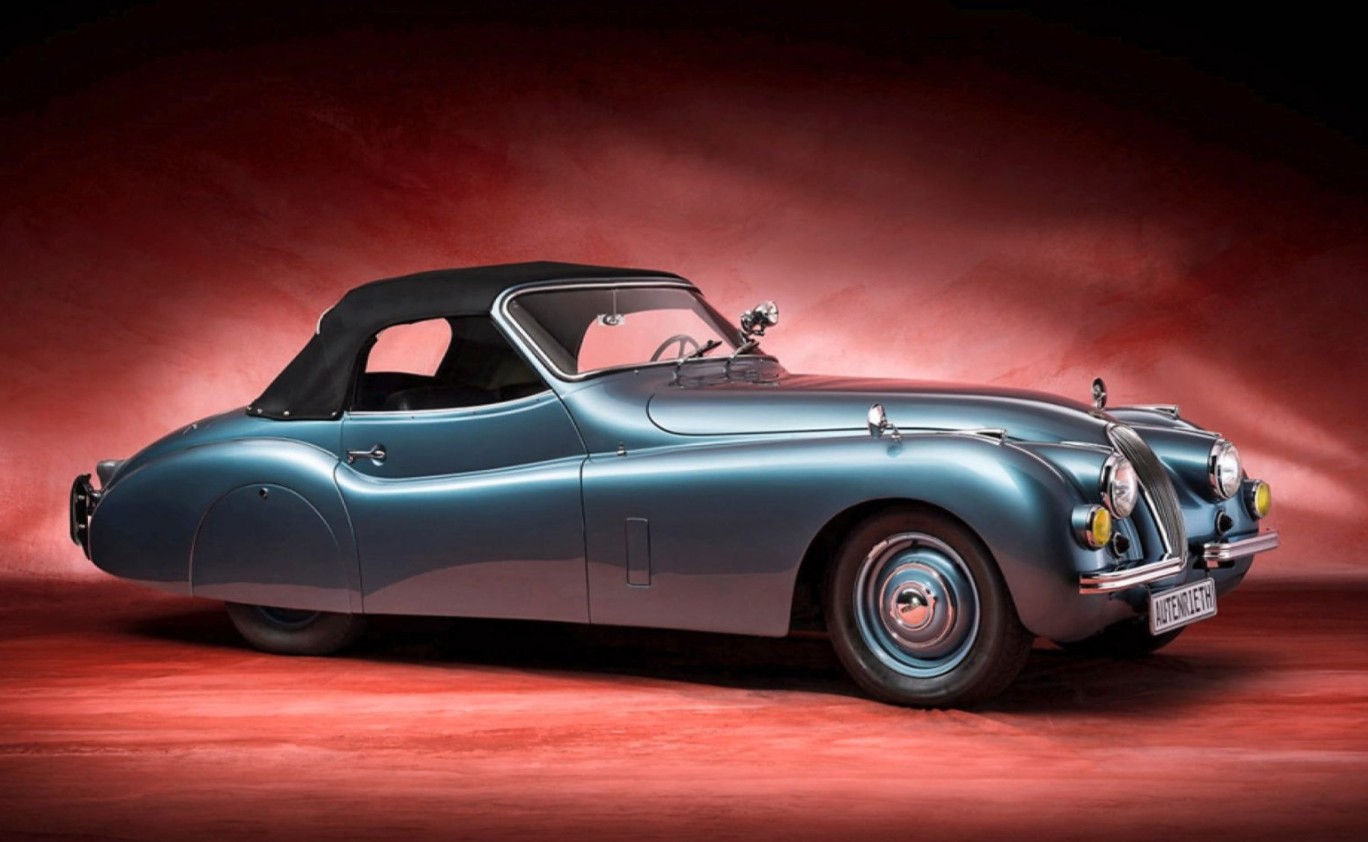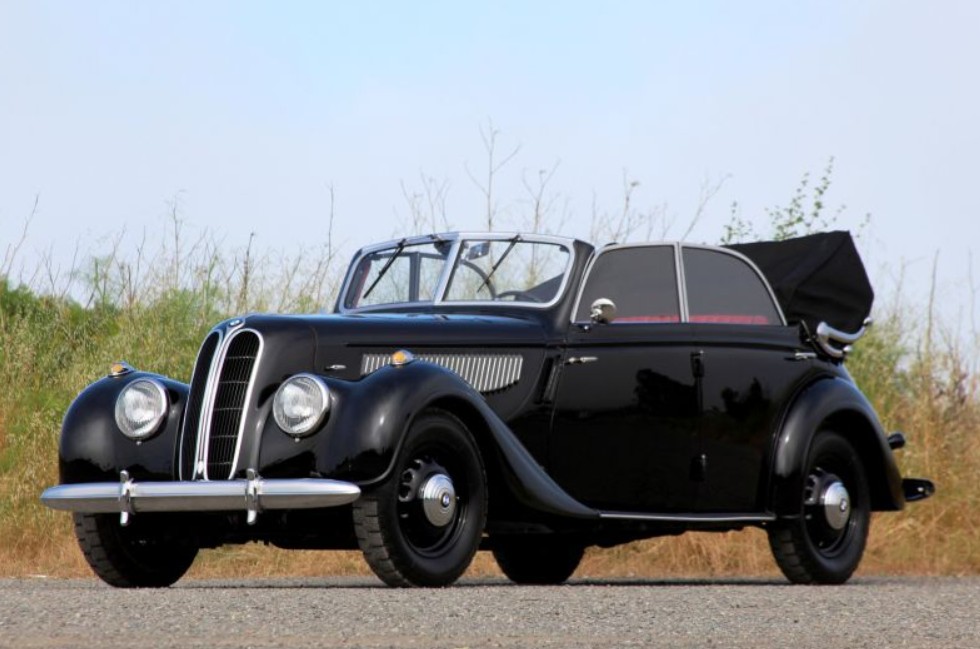1951 Jaguar XK120 Cabriolet by Autenrieth
Offered by Oldtimer Galerie | Gstaad, Switzerand | December 29, 2017
British sports cars are known for being small and having cramped quarters for driver and passenger. The Jaguar XK120 was no exception. Introduced in 1948, it was Jaguar’s first post-war sports car and it was unlike anything else on the road at the time.
It was powered by a 160 horsepower, 3.4-liter straight-six. The “120” in the car’s name referred to it’s top speed in mph. It was lauded as “the world’s fastest production car,” which was largely marketing B.S. as a pre-war Model J Duesenberg could supposedly do 130+ (but I guess that wasn’t classified as a “production” car?).
Anyway, about those cramped quarters. This car was ordered new by a man in Frankfurt, Germany. He didn’t like the way he fit inside of it, so he shipped it to Autenrieth in Darmstadt and they built a wider body for the car, enlarging the passenger compartment to make it roomier. Strangely, the body was built in two halves by two different teams and then joined when placed on the car. If there was a reality competition show about coachbuilding, this is how it would be done. You can apparently still see the seam under the hood.
Autenrieth planned to build eight of these, but this was the only one completed as it brought with it an immense cost. It may still look like a stock XK120, but it is indeed different. Discovered in 1990 after 25 years of disuse, it was restored between 1991 and 1994 and again between 2010 and 2012, when the original engine was re-installed. This one-off Jag will be one of the last cars sold at auction in 2017. Click here for more info and here for more from this sale.


